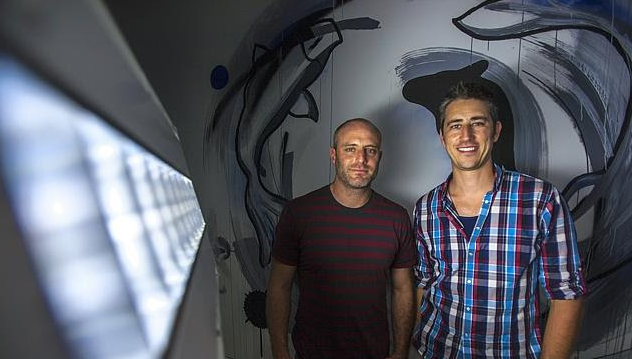News and Announcements

Bright idea saves on energy bills
- Published February 19, 2014 1:13PM UTC
- Publisher Wholesale Investor
- Categories Company Updates
Source: The Australian Financial Review
By: NICK LENAGHAN
 Old engineering school chums and now Melbourne-based entrepreneurs Chris Duffield and Danny Bishop (left) have a simple plan to save plenty on lighting bills.
Old engineering school chums and now Melbourne-based entrepreneurs Chris Duffield and Danny Bishop (left) have a simple plan to save plenty on lighting bills.
Their start-up Organic Response is a wireless lighting control system based on a sensor device, smaller than the size of a matchbox, integrated into light fittings.
As the sensors detect human presence within a building, an infrared signal is sent to nearby devices, allowing the lights to adjust to occupancy levels, saving energy.
The sensors communicate directly with each other, avoiding the need to install and wire a separate control system.
“Existing lighting control systems use a wired network and have high levels of complexity,” Mr Duffield said. “That results in high costs and requires large amounts of skilled labour to install and maintain.”
The system has already been installed successfully across 13 sites in Australia and three in Europe, including in major commercial and public buildings.
The devices rely on high-tech “flocking” algorithms which mimic the way decisions by individuals in a group lead to collective decisions and behaviour.
The business plan is just as clever, based on forming strategic alliances with lighting manufacturers, who have existing channels to market.
Under the guidance of Deloitte, the partners are looking to raise $5 million in capital to scale up their operations, with an eye to hitting sales of $221 million, or 6.5 million units, within four years.
Deloitte partner Xander Alpherts said Organic Response “disrupts” the lighting control industry based around installing a costly, separate system.
“The market opportunity is large. These guys have the first-mover advantage in that space and they need to capitalise on that.”
Co-founder and technical director Danny Bishop is the brains behind the smart devices. Already he has an eye on the appeal of the innovation for “big data” players, who are eager to get access to connected places and spaces.
“What we do is place a large number of sensors quite densely around the built environment,” he said.
“They share information and create an occupancy information cloud. That information has an incredibly real value proposition to other services like the building management service.”
Company Updates
Backed By Leading Investment Groups and Family Offices







